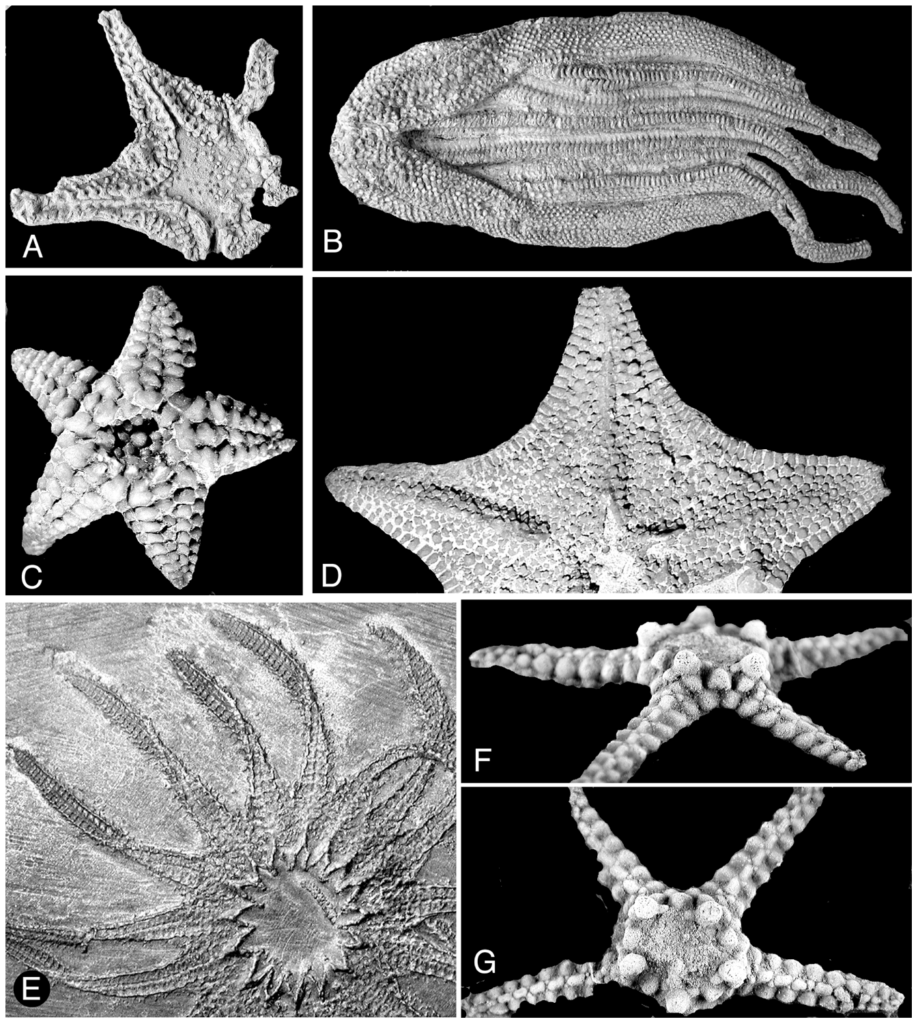@WFS,World Fossil Society,Riffin T Sajeev,Russel T Sajeev
Global Diversity and Phylogeny of the Asteroidea (Echinodermata)
Citation: Mah CL, Blake DB (2012) Global Diversity and Phylogeny of the Asteroidea (Echinodermata). PLoS ONE 7(4): e35644. https://doi.org/10.1371/journal.pone.0035644
Editor: Jonathan H. Badger, J. Craig Venter Institute, United States of America
Members of the Asteroidea (phylum Echinodermata), popularly known as starfish or sea stars, are ecologically important and diverse members of marine ecosystems in all of the world’s oceans. We present a comprehensive overview of diversity and phylogeny as they have figured into the evolution of the Asteroidea from Paleozoic to the living fauna. Living post-Paleozoic asteroids, the Neoasteroidea, are morphologically separate from those in the Paleozoic. Early Paleozoic asteroid faunas were diverse and displayed morphology that foreshadowed later living taxa. Preservation presents significant difficulties, but fossil occurrence and current accounts suggests a diverse Paleozoic fauna, which underwent extinction around the Permian-Triassic interval was followed by re-diversification of at least one surviving lineage. Ongoing phylogenetic classification debates include the status of the Paxillosida and the Concentricycloidea. Fossil and molecular evidence has been and continues to be part of the ongoing evolution of asteroid phylogenetic research. The modern lineages of asteroids include the Valvatacea, the Forcipulatacea, the Spinlosida, and the Velatida. We present an overview of diversity in these taxa, as well as brief notes on broader significance, ecology, and functional morphology of each. Although much asteroid taxonomy is stable, many new taxa remain to be discovered with many new species currently awaiting description. The Goniasteridae is currently one of the most diverse families within the Asteroidea. New data from molecular phylogenetics and the advent of global biodiversity databases, such as the World Asteroidea Database (http://www.marinespecies.org/Asteroidea/) present important new springboards for understanding the global biodiversity and evolution of asteroids.

Paleozoic stem-group somasteroid and asteroids.
A. Ophioxenikos langenheimi (Somasteroidea) Blake & Guensburg, X-4751. B. Urasterella grandis (Meek) USNM 40885. Ordovician. C. Hudsonaster incomptus (Meek) USNM 40882 Ordovician. D. Jugiasspeciosus (Miller and Dyer). MCS 10806. Ordovician. E. Helianthaster rhenanus Roember . PWL 1983-21, Devonian. F and G. Paleaster clarki Clarke and Swartz USNM 144825. Devonian.



 April 24th, 2018
April 24th, 2018  Riffin
Riffin  Posted in
Posted in  Tags:
Tags: 